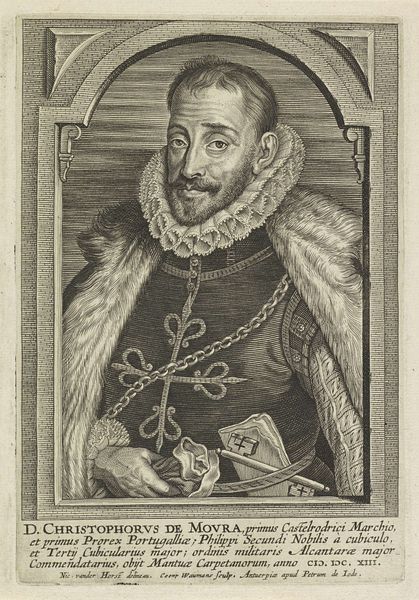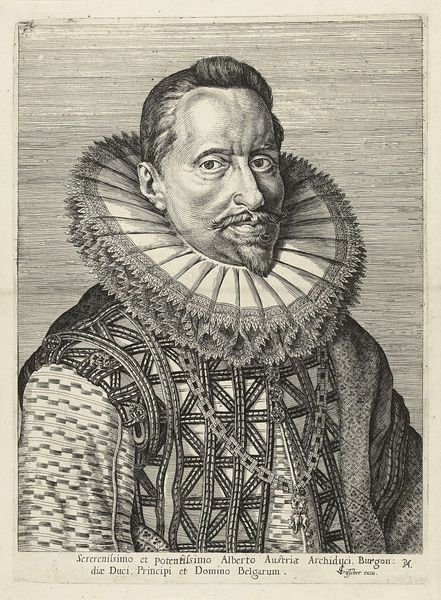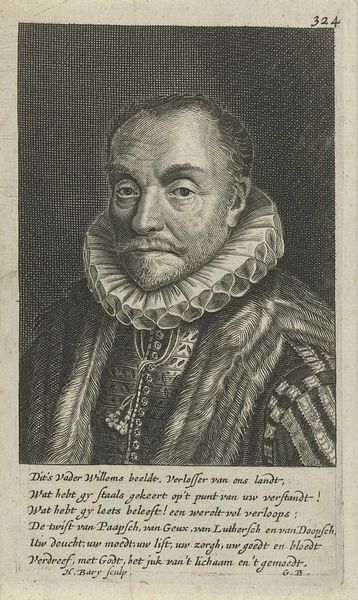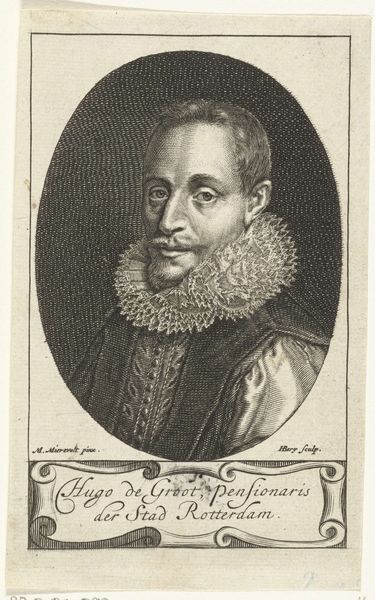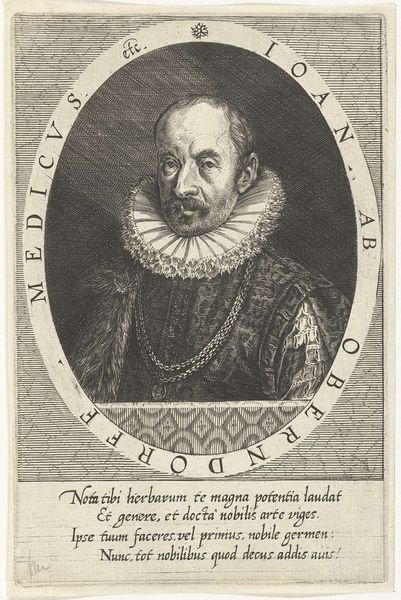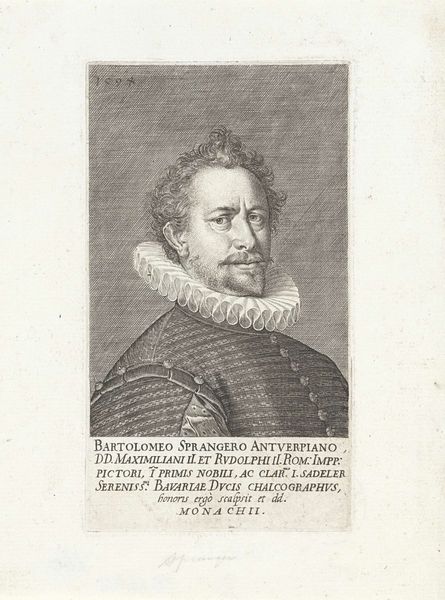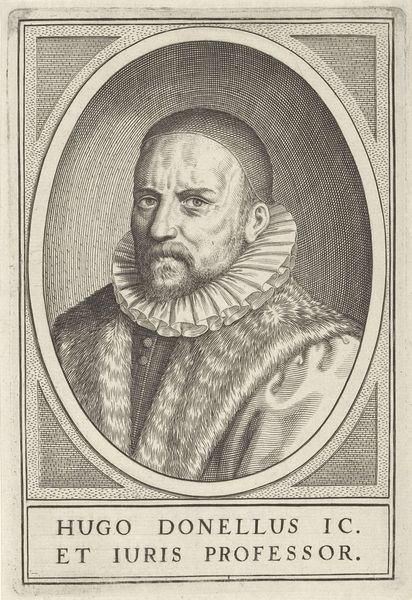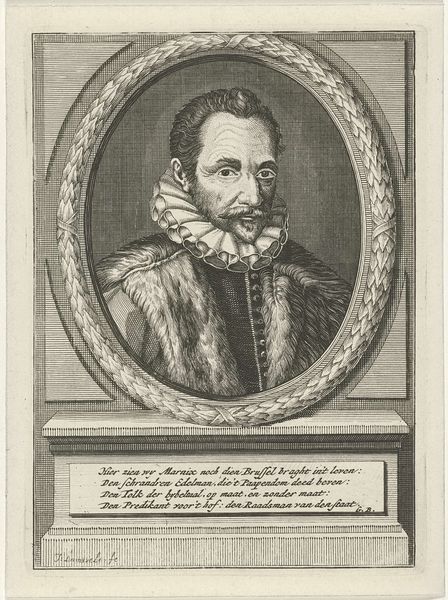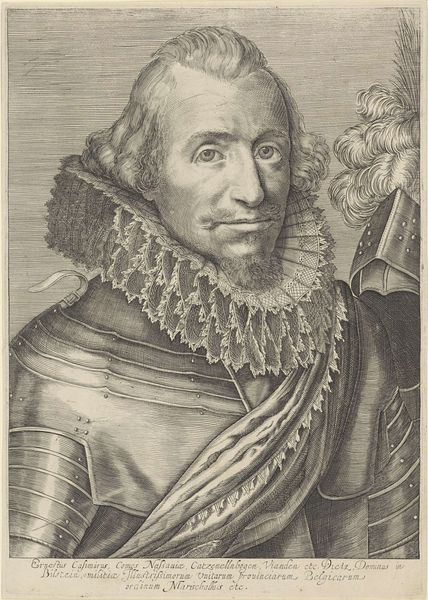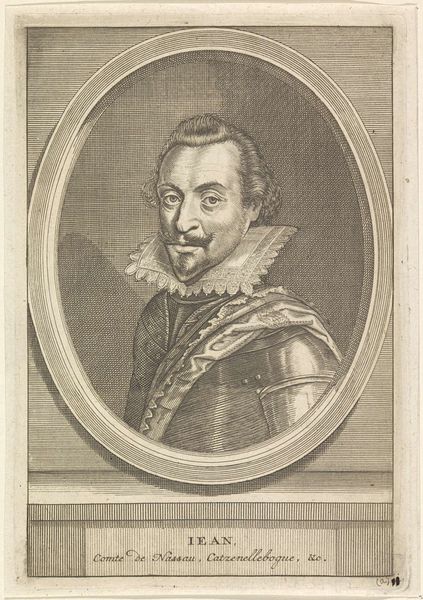
print, engraving
#
portrait
#
baroque
# print
#
old engraving style
#
history-painting
#
engraving
Dimensions: height 132 mm, width 77 mm
Copyright: Rijks Museum: Open Domain
Editor: Here we have a print, "Portret van Filips van Marnix van Sint-Aldegonde" by Hendrik Bary, made sometime between 1657 and 1707. The subject’s fur-trimmed coat and elaborate ruff collar suggest status. It has this really intriguing baroque sensibility with its strong contrasts of light and shadow. What can you tell me about it? Curator: What I see is an artwork deeply embedded within the political and religious conflicts of its time. This isn’t just a portrait; it's a carefully constructed image designed to project a very specific message about the subject, Philips van Marnix. Consider the inscription at the bottom: how does that text frame our understanding of Marnix? Editor: Well, from the inscription, it looks like he was a prominent figure who challenged the established order, and someone deeply involved in religious interpretation and politics. "The Schrandron Edelman, die't Paapendom deed beven," seems particularly strong. Curator: Exactly. Marnix was a key figure in the Dutch Revolt against Spanish rule and a staunch Calvinist. The "Paapendom" refers to the Catholic Church, the religious arm of the Spanish regime. Think about how the artist uses the conventions of portraiture, like the luxurious clothing you pointed out, to elevate Marnix while simultaneously presenting him as a figure of opposition and resistance. How does this play into the role of prints in shaping public opinion at the time? Editor: So the print serves as propaganda, bolstering his image and solidifying his place in the cultural memory of the Dutch Republic? I hadn't considered how the artist was crafting public opinion. Curator: Precisely. And understanding the context helps us understand why this image would have been so powerful and so widely circulated. It really illustrates how art becomes a tool in shaping political and religious narratives. Editor: That is fascinating. I will definitely pay more attention to those elements going forward.
Comments
No comments
Be the first to comment and join the conversation on the ultimate creative platform.
